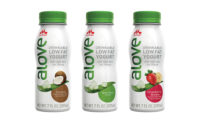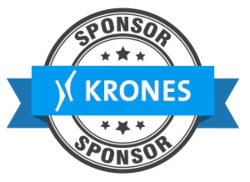
"Do call it a comeback."
The milk category has soured in terms of consumption, but processors are not yet down for the count.
Such factors as higher prices and a dynamic shopper base are resulting in declining volume sales. Without significant steps by processors and retailers to launch new and exciting products and leverage strong marketing schemes, the sector is likely to remain stagnant, analysts say.
Dairy milk dollar sales totaled $15.59 billion for the 52 weeks ending Aug. 13, up 2.4% from the prior-year period, reports Circana, a Chicago-based market research firm. The increase, however, is largely the result of higher milk prices, as unit sales fell 3.1% to 4.49 billion and the average price per unit grew 5.7% to $3.47.
"Milk sales have been declining for three consecutive years after a strong 2020 but this isn’t unique to milk," says Anne-Marie Roerink, president of 210 Analytics LLC, a San Antonio-based market research and marketing strategies firm. "Most categories dipped into negative growth territory in the second quarter of 2021 and haven’t been able to push volume or units above year-ago levels ever since."
While inflation is fueling the increase in dollar sales, the percent of unit declines closely match those for store-wide food and beverage sales, she explains. "Factor one is simply the macro environment in which shoppers are trying to balance their paychecks by buying less," Roerink says.
Retailers can help boost activity by highlighting unique product characteristics, such as the "local" origins of their milk selections and educating shoppers about the in-state dairy providers, she states. "Many shoppers like keeping their dollars in the community and minimizing the miles products have traveled to reach the stores," Roerink notes.
Telling stories about local farmers also can help customers "understand how closely related milk is to our earth and how healthy cow’s milk can be for children," says Russell Zwanka, associate professor of food marketing and director of the food marketing program at Western Michigan University in Kalamazoo.
Extolling the health benefits of milk, such as being a source of protein, prebiotics and probiotics, can spur more interest as well, Roerink notes. "Sometimes, the industry expects consumers to know what they believe is obvious, but it never hurts to remind shoppers of the many nutrients," she says.
Indeed, educating shoppers on the better-for-you aspects of milk and the various dairy milk alternatives can trigger greater attention, Zwanka states, adding that having "guide to milk" signage on refrigerated case doors or nearby walls can be effective communication vehicles.
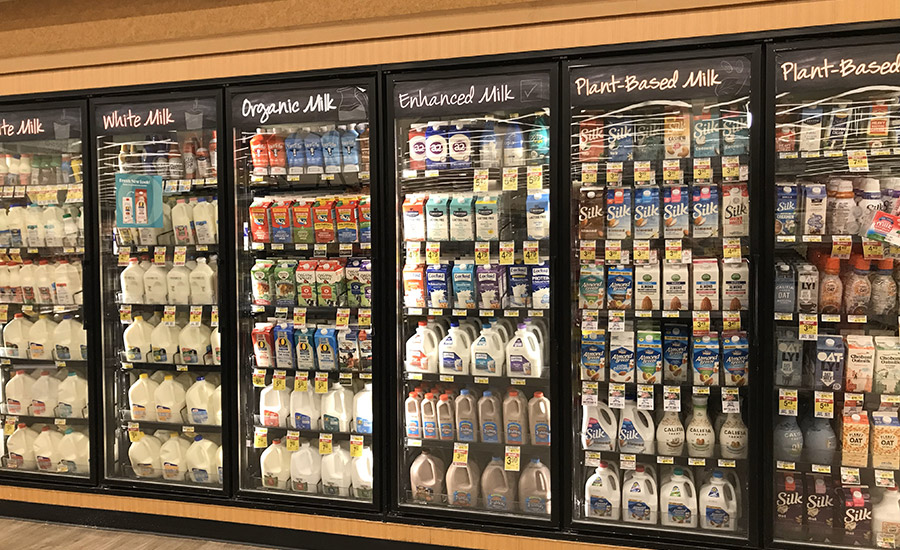
Left hook
Offering a wider range of selections that appeal to more shopper segments can also enable retailers to generate more activity while differentiating their selections from those of competitors, he says. That might include, for instance, offering multi-packs of single-serve containers; providing flavored milks beyond just chocolate; and having "limited-time only" offerings, Zwanka notes.
While retailers tend to review product categories in a cyclical manner, merchandisers should be ready to accelerate the period for milk to keep pace with evolving shopper interests, he says. "It is important that shoppers trust that the retailer is customer-focused and stays up-to-date on changes in the marketplace," Zwanka states. "Consumers appreciate the retailers who stay on trend and offer the variety they’d like."
Regularly revising their array of plant-based alternatives that contain such elements as oats, soy, hemp and almonds is also beneficial, he says. "The next milk alternative may be hitting the market so retailers need to be on top of the trends, which will translate into assortment and planogram changes," Zwanka notes.
"Categories must innovate every year or risk losing relevancy," adds Paul Ziemnisky, group executive vice president and head of wellness, insights, and innovation for Rosemont, Ill.-based Dairy Management Inc. (DMI), which is funded by dairy farmers and works to increase sales and demand for dairy through research, education and innovation.
The organization is teaming with dairy companies, co-ops, and the Washington, D.C.-based Milk Processor Education Program (MilkPEP) to enhance value-added innovation and marketing communications, he notes. Elements include the delivery of science-based claims that illustrate the benefits of milk, such as how milk is a better hydration option than water, Ziemnisky states.
DMI also is researching some of the lesser-known qualities of milk that are likely to resonate with consumers, including those related to immunity, energy and digestive health, he says.
Right hook
Operators, however, still must successfully address a changing merchandising landscape if they are to halt category declines. This includes a growing base of smaller households with fewer children; fewer persons eating cereal; and the growth of yogurt, which many shoppers are consuming in lieu of milk, says Jim Wisner, president of Wisner Marketing LLC, a Gurnee, Ill.-based consulting, research and education firm.
In addition, while most fast-food restaurants now offer breakfast, consumers eating the meals away from home are less likely to order milk, he states, adding that some shoppers also are avoiding milk because of alleged environmental concerns involving the raising of cows.
"There has been a decline in milk sales for 30 years and a ton of headwinds that are making it very tough for the category to grow," Wisner states.
Impacting activity as well is a reluctance by many producers to offer new and potentially popular products, such as more lactose-free offerings, or to extol the benefits of milk in their marketing, he says.
"It is a very traditional industry and members are reluctant to look change in the face," Wisner states. "The industry is not talking about the positives, such as the amount of protein in milk. Not enough is being done to change the game."
That includes a general unwillingness to spotlight the lower calories and fat in skim milk in comparison to plant-based selections, Wisner says. "Many shoppers only compare plant-based milk to whole milk, but you don’t see milk marketers trying to make an issue out of it," he notes.
Retailers, meanwhile, have less incentive to highlight traditional milk instead of organic or plant-based alternatives because of its low margins, Wisner says.
"The return isn’t as good on fluid milk, so it is difficult for retailers to promote a product on its own merits," he states. "They will sell the milk as cheap as possible to remain competitive because it’s a core purchase item for the families with children who generate bigger baskets throughout the store."
Because most retailers price milk similarly, "It's difficult to create buzz around the category from a promotional standpoint," Wisner says.
More companies, he suggests, should emulate San Antonio-based H-E-B and create a destination product. H-E-B, which operates more than 420 stores in Texas and Mexico, is touting its private label Mootopia milk brand that it claims contains 50% more protein and 50% less sugar than ordinary whole milk. Varieties include whole, lactose free, 2% reduced fat, fat-free, chocolate and vanilla.
Other retailer differentiators can include offering ultra-high temperature (UHT) selections, Wisner says, which are blasted at a much higher temperature than regular milk during pasteurization, resulting in the killing of all microorganisms. Such products have a shelf life of many months when packaged in aseptic containers.
"It is easy for milk to go bad in the refrigerator if consumers are not using it frequently because of living in smaller and single households," he notes. "As a result, many people avoid buying milk altogether."
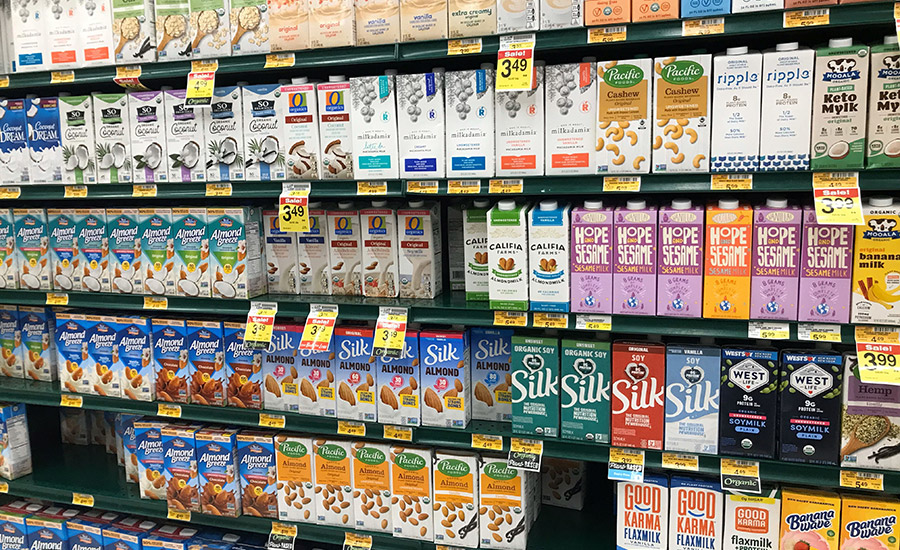
A jab
Retailers also are often reluctant to invest in signage and other marketing vehicles that spotlight traditional milk because of the products’ lower margins, Wisner says, adding that such efforts should typically be the responsibility of producers.
"Retailers have to create something that has more consumer appeal and that shoppers are willing to pay a higher price for," he states. "It is such a low-margin business, even for the producers, that it is difficult for parties to make a risky and big capital investment that may or not pan out."
In the meantime, retailers can potentially develop greater milk-related revenues by cross-merchandising milk with complimentary and higher-margin products from other store departments, such as cereal or chocolate syrup, Wisner says.
He notes, however, that dairy department managers still must deal with the challenge of collaborating with counterparts from other categories who have their own priorities and agendas. "There is a greater consumption of time and effort to make things happen when it goes cross department," he adds.
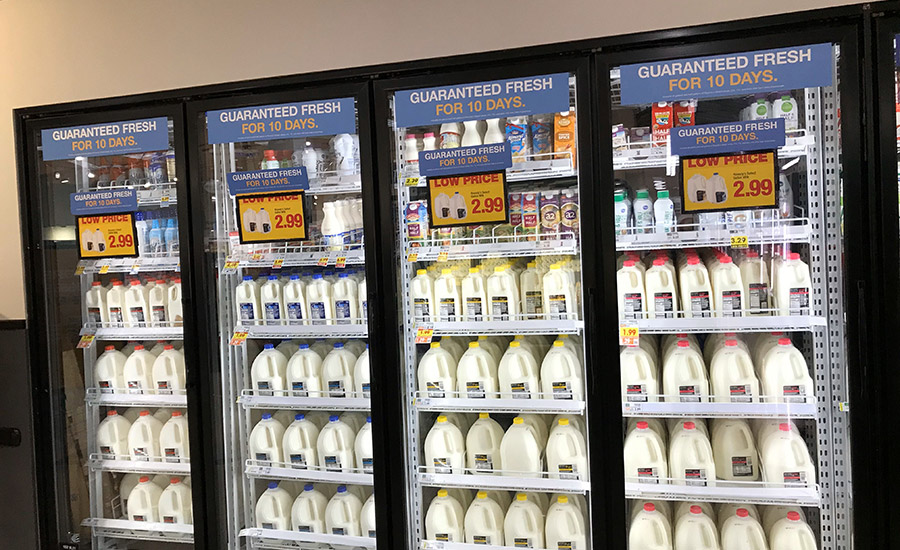
A big victory
On a brighter note, the market for flavored milk appears set for expansion, with Dublin, Ireland-based Research and Markets predicting a global compound annual growth rate of 7% from 2023 to 2028.
"The global flavored milk market is riding on the wave of increased health consciousness among consumers," Research and Markets states. "As people prioritize healthier beverage choices, flavored milk has emerged as a preferable alternative to carbonated, soft, and energy drinks. The heightened awareness about the significance of a balanced diet has spurred the adoption of organic flavored milk variants with low-calorie sweeteners."
Healthier product elements also include such nutrients as niacin, calcium, potassium, phosphorous, protein, riboflavin, and vitamins A, D, and B12, the firm states, noting that product options range from whole milk to creamy milkshakes.
Sector packaging innovations include designs with silver-based microparticles featuring antimicrobial and self-sterilizing properties to enhance shelf life and preserve the taste of flavored milk, Research and Markets reports.
Although the milk category has perhaps suffered a knockdown, it can certainly get itself off the mat. There are still many rounds to be fought.



